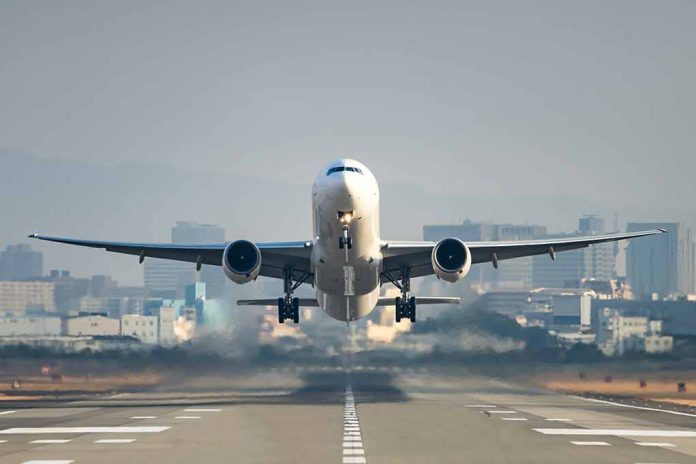
A catastrophic midair collision between an American Airlines jet and a U.S. Army helicopter near Ronald Reagan National Airport prompted an urgent review of aviation safety measures.
Key Takeaways
- An American Airlines jet collided with a U.S. Army helicopter, resulting in 28 fatalities.
- The collision, in controlled airspace, occurred near the White House and led to a suspension of airport operations.
- The crash prompted a massive recovery operation, with 300 first responders searching the Potomac River.
- Safety warnings persist regarding increasing flights and crowded airspace above federal sites.
- Congress previously required more daily flights at Reagan National despite safety objections.
Collision in Tightly Controlled Airspace
A shocking aviation accident unfolded when an American Airlines Bombardier CRJ-701 and a U.S. Army UH-60 Blackhawk collided in midair. The incident, occurring just three miles from the White House around 9 p.m., left 28 people dead. Flights at Reagan National Airport halted, as search and rescue teams scoured the Potomac River for remains. The crash accentuates ongoing concerns about aviation safety and the complexities of managing Washington’s frenetic airspace.
The National Transportation Safety Board continues its investigation into how the collision transpired. Initial findings show air traffic control had directed the jet toward a shorter runway moments before the crash. This airspace includes both passenger and military aircraft, creating a potentially hazardous environment for pilots and controllers.
A Tragic Loss and Swift Response
The midair collision left behind a tragic loss of life, with victims including a group of returning figure skaters from the 2025 U.S. Figure Skating Championships. The severity of the crash immediately shifted the operation’s focus. Washington Fire Chief John Donnelly stated, “We are now at the point where we are switching from a rescue operation to a recovery operation. We don’t believe there are any survivors.”
With 300 first responders involved, the effort underscores the rapid and cooperative emergency response amid this disaster.
Aviation Safety and Regulatory Challenges
The incident has reignited discussion on aviation safety protocols. Having broken passenger records in 2023, the busy Reagan National operates in one of the country’s most tightly regulated airspaces. This collision highlights pressures from Congress to increase daily flights despite known safety concerns, an issue highlighted by Virginia Sen. Tim Kaine and aviation safety experts.
The financial demands on airlines, digital vulnerability, and air traffic controller shortages present additional challenges. Experts recommend a dual focus on advancements in cybersecurity and stringent manufacturing practices to bolster aviation safety.
Sources:
- What is known about the collision between a passenger jet and Army helicopter near DC
- Why the airspace near Reagan airport in Washington has long been a concern







